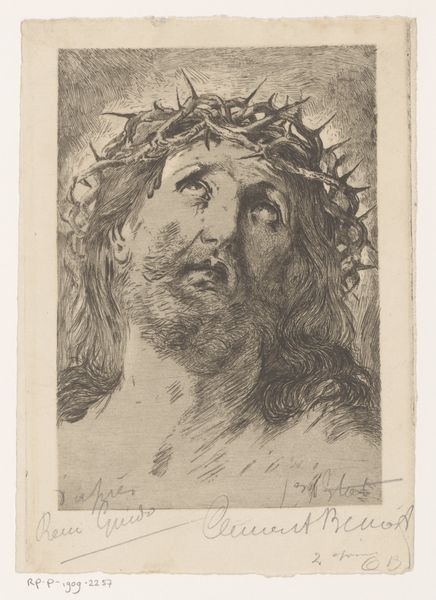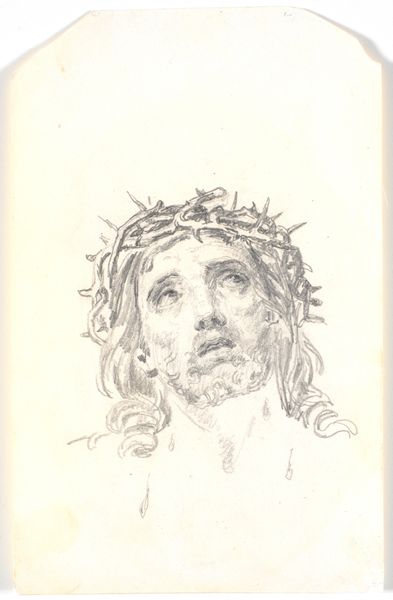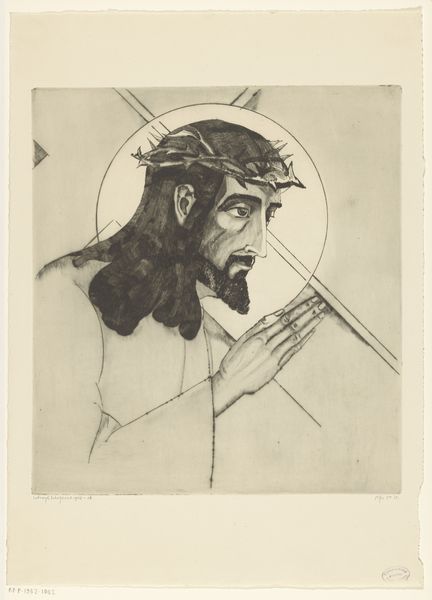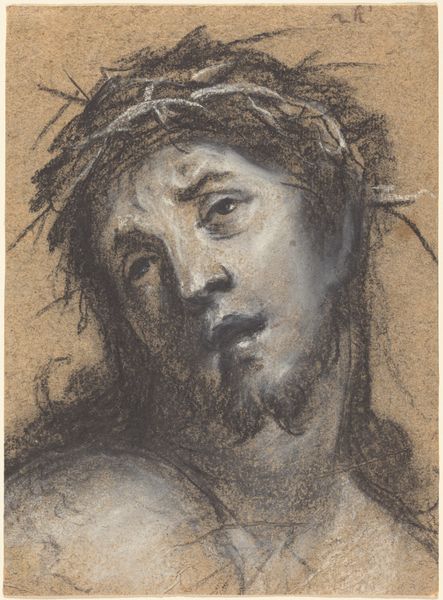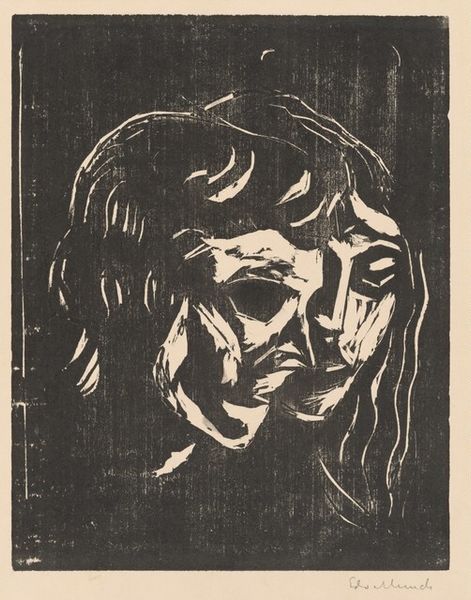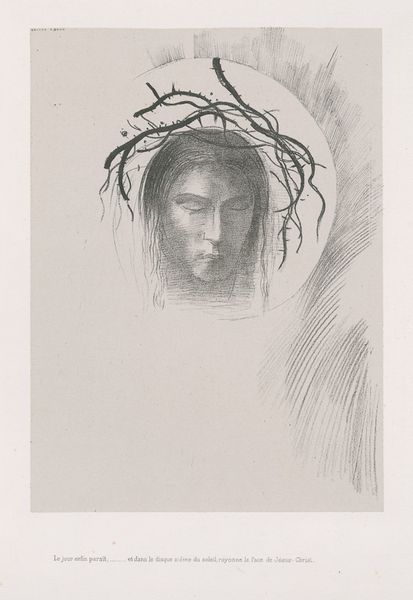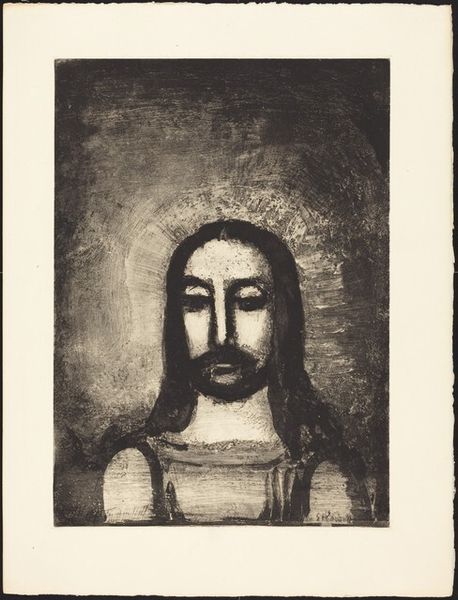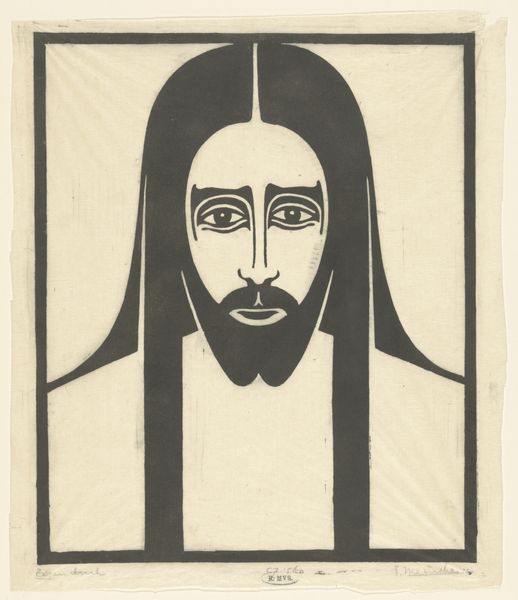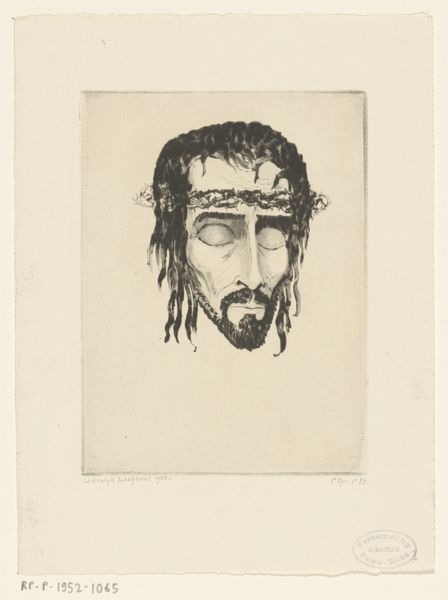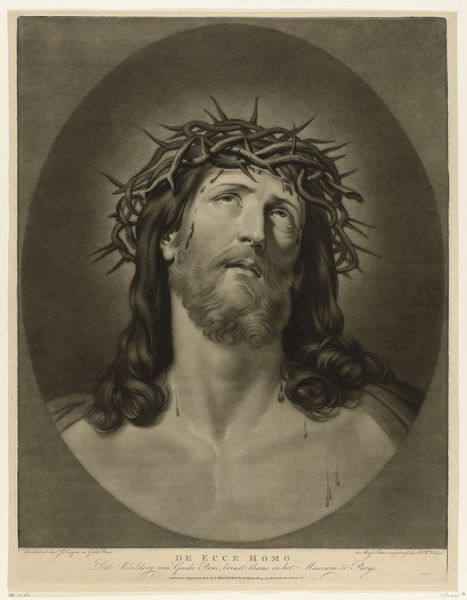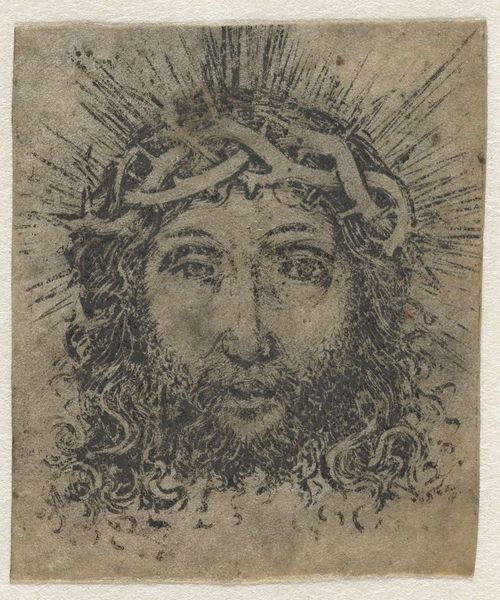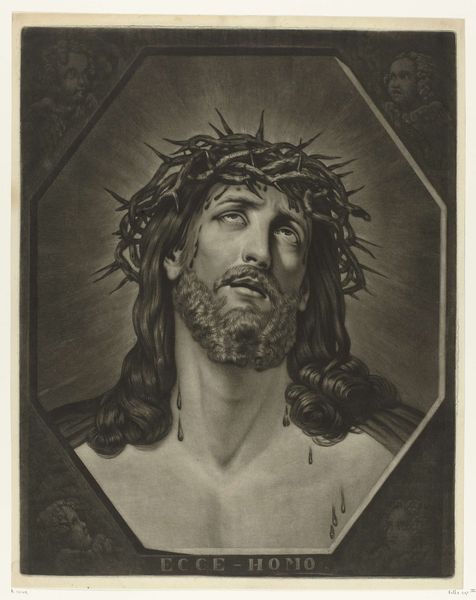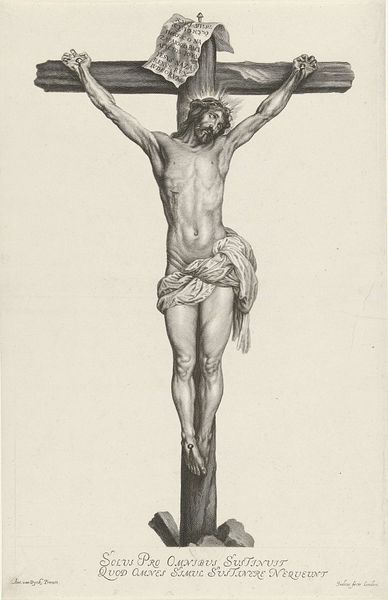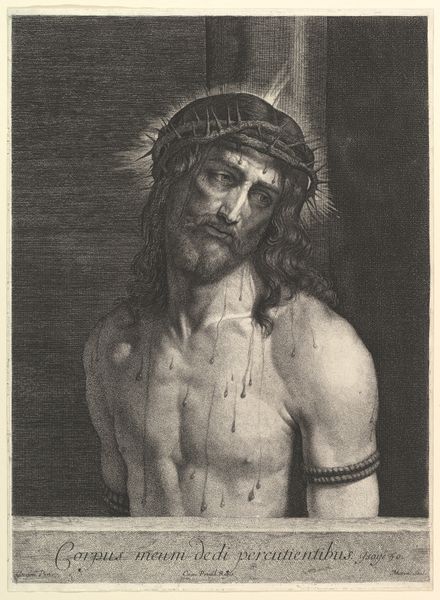
tempera, painting, print
#
portrait
#
tempera
#
painting
# print
#
expressionism
Copyright: National Gallery of Art: CC0 1.0
Curator: This compelling artwork is titled "C'est par ses meurtrissures que nous sommes gueris," translating to "It is by his wounds that we are healed." It's a tempera and print creation by Georges Rouault, dating back to 1926. Editor: It's stark. Immediately, the thick black lines framing the somber visage hit you, lending it a haunting, almost brutal quality. The grey tones amplify the solemn mood. Curator: Rouault's oeuvre, particularly during this period, consistently grappled with themes of suffering, redemption, and spiritual awakening. This work is very telling of the socio-political context following the first world war, a trauma echoed through the religious iconography. Editor: Yes, the imagery! The crown of thorns…the downcast eyes... it evokes a familiar religious narrative, but through an expressionist lens. Are we meant to empathize, to feel implicated in this suffering? Where does this image place the viewer within the frame? Curator: It's an intentional placement, demanding a reckoning. Rouault, deeply affected by the devastation of the war and the hypocrisy he perceived in societal structures, employed religious subjects to critique power dynamics. Christ’s suffering mirrors that of the marginalized. He is intentionally linking the sacred to the profane. Editor: So, it's not simply religious devotion but a powerful commentary on systemic oppression? And that explains why it hits harder and lingers longer? Because, it seems the suffering portrayed stands in for multiple sources. Curator: Precisely. Rouault challenged the Church, alongside other established institutions, casting it as both victim and perpetuator. That's where this artwork situates itself; amidst dialogues of class, politics, faith, and the intersection of institutional authority with those most vulnerable. Editor: That completely reframes the impact! Knowing Rouault used art to challenge dominant powers of his time… this becomes more than a portrait of sorrow, it is a fierce declaration against social injustice, even now, decades after its creation. Curator: Absolutely. It underscores the timeless struggle, forcing us to examine the continuous cycle of violence. Editor: That context is what elevates it from being a mere expressionist work to being an invitation, almost a demand, for genuine self and social reflection. Curator: I concur, a profound invitation for our own historical moment, rendered with simple yet arresting severity.
Comments
No comments
Be the first to comment and join the conversation on the ultimate creative platform.
